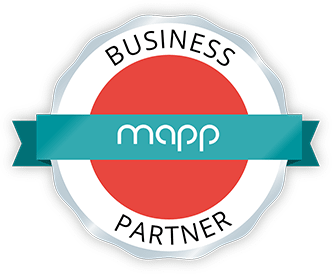In the ever-evolving realm of digital marketing, understanding customer behaviour and engagement is paramount. The ability to track and analyse on-site interactions provides businesses with invaluable insights to tailor their strategies effectively. Klaviyo, a name synonymous with innovation in marketing automation, has introduced Klaviyo CDP – a ground-breaking feature that elevates this understanding to new heights – Anonymous Visitor Activity Backfilling. In this article, we delve into what this feature entails and how it can revolutionise your customer insights.
The power of tracking: Klaviyo CDP web tracking basics
Before we delve into the transformative aspect of anonymous visitor activity backfilling, let’s revisit the foundation – Klaviyo’s web-tracking capabilities. By default, Klaviyo’s web-tracking includes two pivotal metrics:
1. Active on-site tracking
This metric comes into play whenever an identifiable browser visits your website. It serves as a cornerstone for segmenting your contacts based on engagement levels.
2. Viewed product tracking
For eCommerce platforms, this metric is a game-changer. It records instances when an identifiable browser views a product page on your website. This data becomes crucial for sending personalised reminders in browse abandonment flows, nudging potential customers towards completing their purchases.
Anonymous visitor activity backfilling: A deeper dive
The true marvel, however, lies in Klaviyo’s anonymous visitor activity backfilling. Imagine being able to capture and store the onsite actions of visitors who haven’t been identified yet. This translates to a comprehensive understanding of customer journeys, even before they enter your marketing funnel.
How it works
Klaviyo’s approach is ingenious. It records and stores data about visitors’ actions locally in their browsers as these actions occur. Once these visitors are identified in the future – say, through a Klaviyo signup form or by clicking a link from a Klaviyo email – the stored data is then sent to Klaviyo and seamlessly integrated into your customer insights.
Enabling the magic
To enable this feature, ensure you have Klaviyo.js installed on your website. Klaviyo.js not only empowers Klaviyo sign-up forms but also tracks visitors’ activities. Once the Klaviyo.js is successfully integrated, a simple toggle in your account settings – “Enable anonymous visitor tracking” – opens the doors to this transformative capability.
Testing and verification
Naturally, you’d want to verify the efficacy of this feature. Klaviyo provides a step-by-step guide to test anonymous visitor historical backfilling. This involves ensuring front-end events trigger successfully, taking onsite actions as an anonymous visitor, and cross-referencing the stored data with identified data once the visitor is tagged.
Clearing the air: FAQs addressed
In the spirit of transparency, Klaviyo addresses common questions:
- Is this feature enabled by default? No, the feature needs to be toggled on in your account settings.
- What events are included in post-identification syncing? Front-end events such as Active on Site and Viewed Product are captured through Klaviyo’s main onsite tracking snippet, Klaviyo.js.
- How many events can be stored in local storage? A browser’s local storage allows for up to 10,000 events, capped at 5MB.
- Why local storage over cookies? Local storage is more robust, with a larger storage capacity and no expiration date. Safari’s 7-day expiration policy for local storage is worth noting.
- Are there privacy concerns? Klaviyo acknowledges potential privacy concerns when sensitive data is sent through front-end events. It recommends using server-side requests or delaying data transmission until identification.
- Does it work with cookie consent tools? Consent is vital. If your store uses a cookie consent tool, visitors must opt-in for anonymous activity capture.
Embrace the future: Start capturing anonymous activity
In the era of data-driven decision-making, Klaviyo’s anonymous visitor activity backfilling emerges as a pivotal tool. It empowers marketers with a holistic view of customer journeys, enabling more personalised and targeted strategies. By unlocking the power of anonymous data, you propel your marketing efforts into the future.
Intrigued? Dive deeper into Klaviyo’s anonymous visitor activity backfilling and elevate your marketing prowess. Contact us for more information.
Who are
PAASE?
Our experts work with you to understand your business and drive revenue and ROI.





